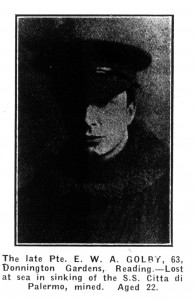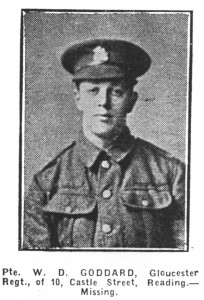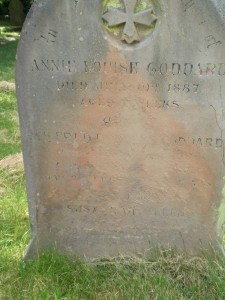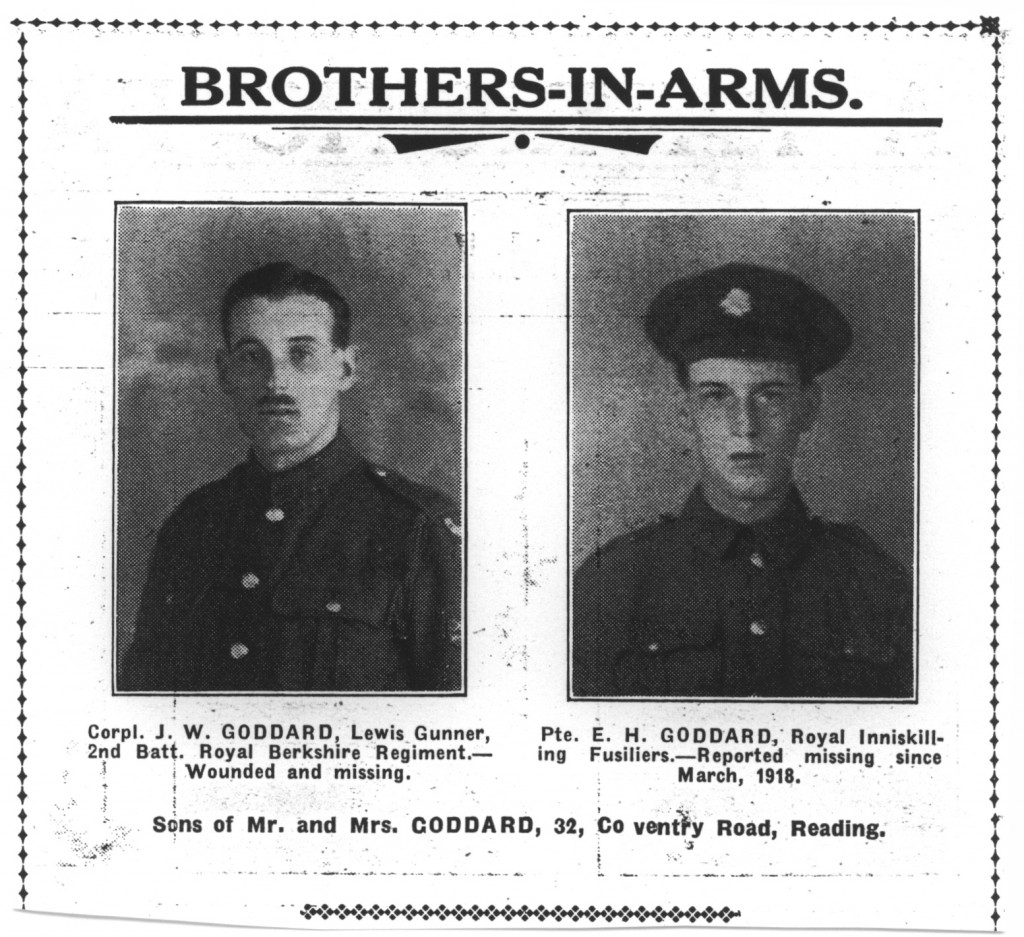Edwin William Arthur Golby
Private M2/034980
273rd Motor Transport Company, Army Service Corp
Division 71
Extension
 |
Edwin William Arthur Golby was the son of Mr Edwin and Mrs Rose Golby, of 63, Donnington Gardens, Reading. In the 1911 census his father was recorded as a Coach Driver and Edwin as an apprentice carpenter. Edwin had an older and younger sister. He is commemorated on the family grave. Number 17928. Berkshire Family History Society classification 72G16. The wording on the kerbstone is ‘EDDIE ONLY SON, LOST AT SEA JANUARY 8TH 1916 AGED 21’.
Edwin Golby was lost when the ship the S.S. Citta di Palermo, was mined. The SS Citta Di Palermo, an Italian transport carrying Commonwealth troops. It was sunk off Brindisi, a port on the heel of Italy in the Adriatic, on 8 January 1916. In rescuing survivors, two Royal Naval Otranto drifters were themselves mined and blown up. Edwin Golby is remembered on the Hollybrook Memorial, Southampton. This memorial is to the officers and men of the forces of the Empire who fell in the Great War and whose graves are not known, especially those lost in home waters.
The full commemoration reads:
1914-1918 TO THE GLORY OF GOD AND IN MEMORY OF 1855 OFFICERS AND MEN OF THE FORCES OF THE BRITISH EMPIRE WHO FELL IN THE GREAT WAR AND HAVE NO OTHER GRAVE BUT THE SEA OR TO WHOM THE FORTUNE OF WAR DENIED THE KNOWN AND HONOURED BURIAL GIVEN TO THEIR COMRADES IN DEATH.
1916 saw an increasing number of attacks on merchant ships right from the beginning of the year. The USA was warned that its merchant ships would be treated as ‘belligerent’ by the German fleet and the British, in an effort to starve out Germany set in force a blockade. The Battle of Jutland was fought at the end of May between the fleets of both navies.



